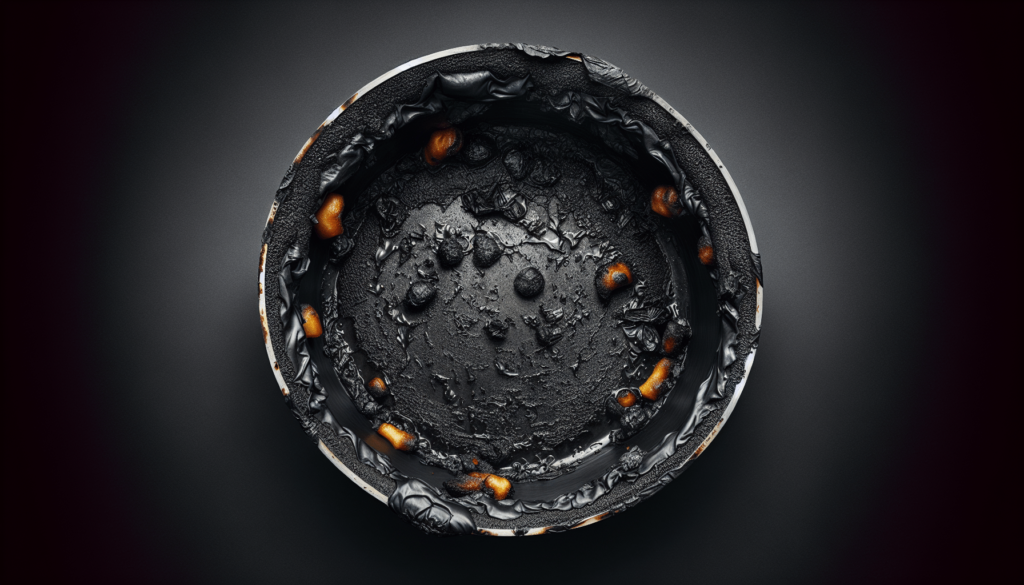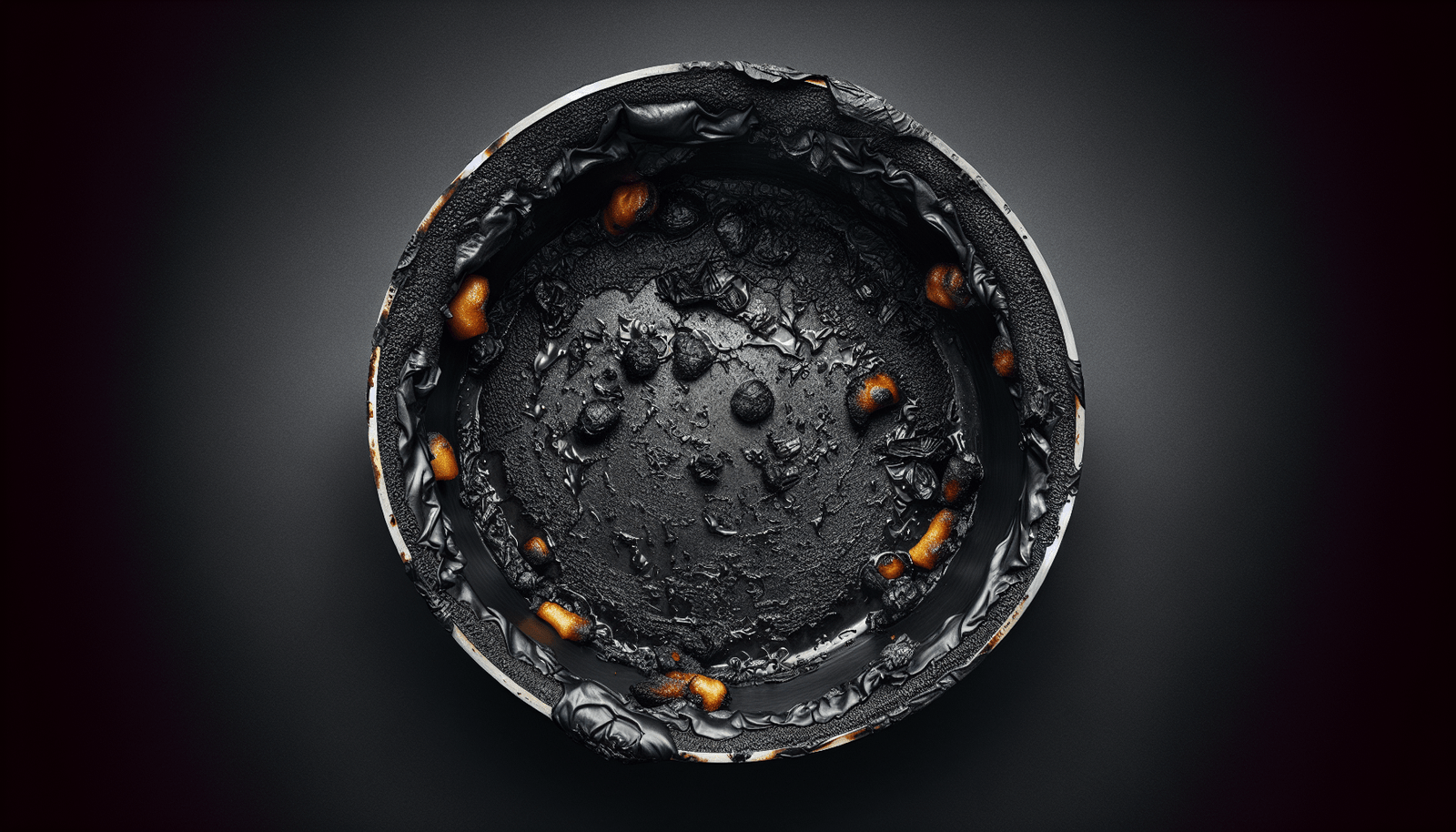You’ve Burned Dinner Again – Now What?
Oh no, you’ve done it again! You’ve managed to burn dinner and now you’re left with pots and pans covered in burnt food. Don’t worry, we’ve all been there. But fear not, there are ways to salvage your cookware and remove that burnt-on mess. Let’s dive into some tips and tricks to help you get your pots and pans back in tip-top shape.
Assess the Damage
First things first, take a good look at the pot or pan. How bad is the burnt food? Is it just lightly charred or completely blackened and stuck to the surface? The severity of the burn will determine which method you use to clean it.
Materials You’ll Need
Before you get started, gather the necessary materials to clean your pots and pans. Here’s what you’ll need:
- Baking soda
- Vinegar
- Dish soap
- Lemon
- Salt
- Nylon scrubbing pad
- Wooden spoon or spatula
- Boiling water
Make sure you have these items on hand before you start the cleaning process.

The Soak and Scrub Method
For pots and pans with burnt-on food that isn’t too severe, the soak and scrub method can work wonders. Here’s how to do it:
- Fill the pot or pan with warm water and add a generous amount of dish soap.
- Let it soak for at least 30 minutes to loosen up the burnt food.
- After soaking, use a nylon scrubbing pad to gently scrub away the burnt residue.
- For tougher spots, mix baking soda with water to create a paste and scrub with that.
- Rinse the pot or pan thoroughly and dry it with a clean towel.
This method can be effective for pots and pans with mild burn marks.
The Vinegar and Baking Soda Method
When the burnt-on food is stubborn and won’t budge with just soaking and scrubbing, it’s time to bring in the big guns – vinegar and baking soda. Here’s how to use this dynamic duo to clean your pots and pans:
- Sprinkle a layer of baking soda over the burnt food in the pot or pan.
- Pour vinegar over the baking soda until it fizzes.
- Let the mixture sit for about 30 minutes to break down the burnt residue.
- Use a nylon scrubbing pad to scrub away the loosened burnt food.
- Rinse the pot or pan thoroughly and dry it with a clean towel.
The combination of vinegar and baking soda creates a powerful cleaning agent that can help tackle even the toughest burnt-on messes.
Lemon and Salt Scrub
For a more natural and aromatic cleaning solution, try using lemon and salt to scrub away burnt food from your pots and pans. Here’s how to do it:
- Cut a lemon in half and sprinkle salt over the burnt areas of the pot or pan.
- Use the lemon halves to scrub the salt into the burnt residue.
- Let it sit for a few minutes to allow the acidity of the lemon and abrasive salt to work their magic.
- Use a nylon scrubbing pad to scrub away the loosened burnt food.
- Rinse the pot or pan thoroughly and dry it with a clean towel.
The combination of lemon and salt not only helps to clean burnt food but also leaves your cookware smelling fresh and citrusy.
Boiling Water Method
If the burnt residue is particularly stubborn and hard to remove, you can try using boiling water to help loosen it up. Here’s how to do it:
- Fill the pot or pan with enough water to cover the burnt areas.
- Bring the water to a boil and let it simmer for a few minutes.
- Use a wooden spoon or spatula to scrape away the softened burnt food.
- Pour out the water and scrub the pot or pan with a nylon scrubbing pad.
- Rinse thoroughly and dry with a clean towel.
The hot water helps to soften the burnt residue, making it easier to remove without the need for harsh chemicals.
Preventing Burnt Food in the Future
Now that you’ve successfully removed the burnt food from your pots and pans, it’s time to think about how to prevent it from happening again in the future. Here are some tips to keep your cookware looking like new:
- Use the right cooking temperature: Avoid cooking on high heat for extended periods to prevent burning.
- Stir frequently: Stirring your food regularly can prevent it from sticking and burning.
- Use non-stick cookware: Non-stick pots and pans are less likely to develop burnt-on residue.
- Clean up spills immediately: Wipe up any spills or splatters while cooking to prevent them from burning onto the cookware.
By following these preventive measures, you can keep your pots and pans in good condition and avoid the headache of having to clean burnt food in the future.
In Conclusion
Cleaning burnt food from pots and pans can be a frustrating task, but with the right techniques and a little elbow grease, you can restore your cookware to its former glory. Whether you opt for the soak and scrub method, the vinegar and baking soda approach, or the lemon and salt scrub, there are plenty of options to choose from based on the severity of the burn. Remember to gather the necessary materials, be patient during the cleaning process, and take preventive measures to avoid burnt food in the future. Your pots and pans will thank you for it!
